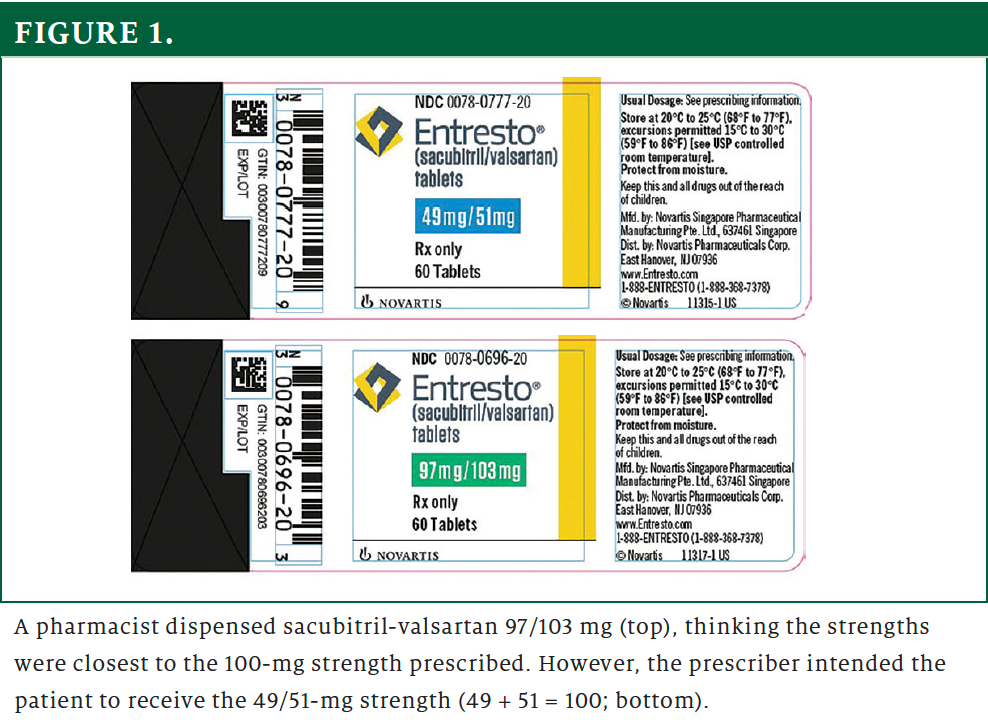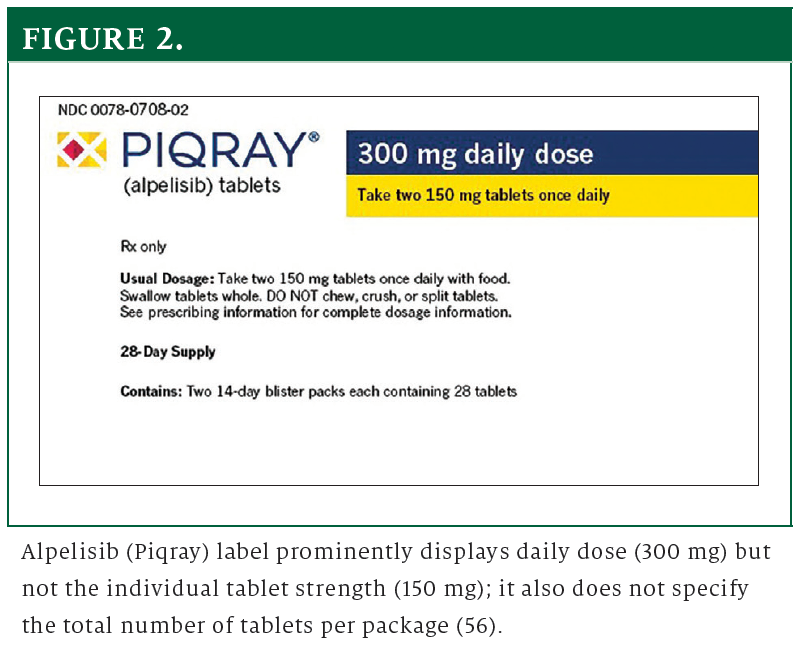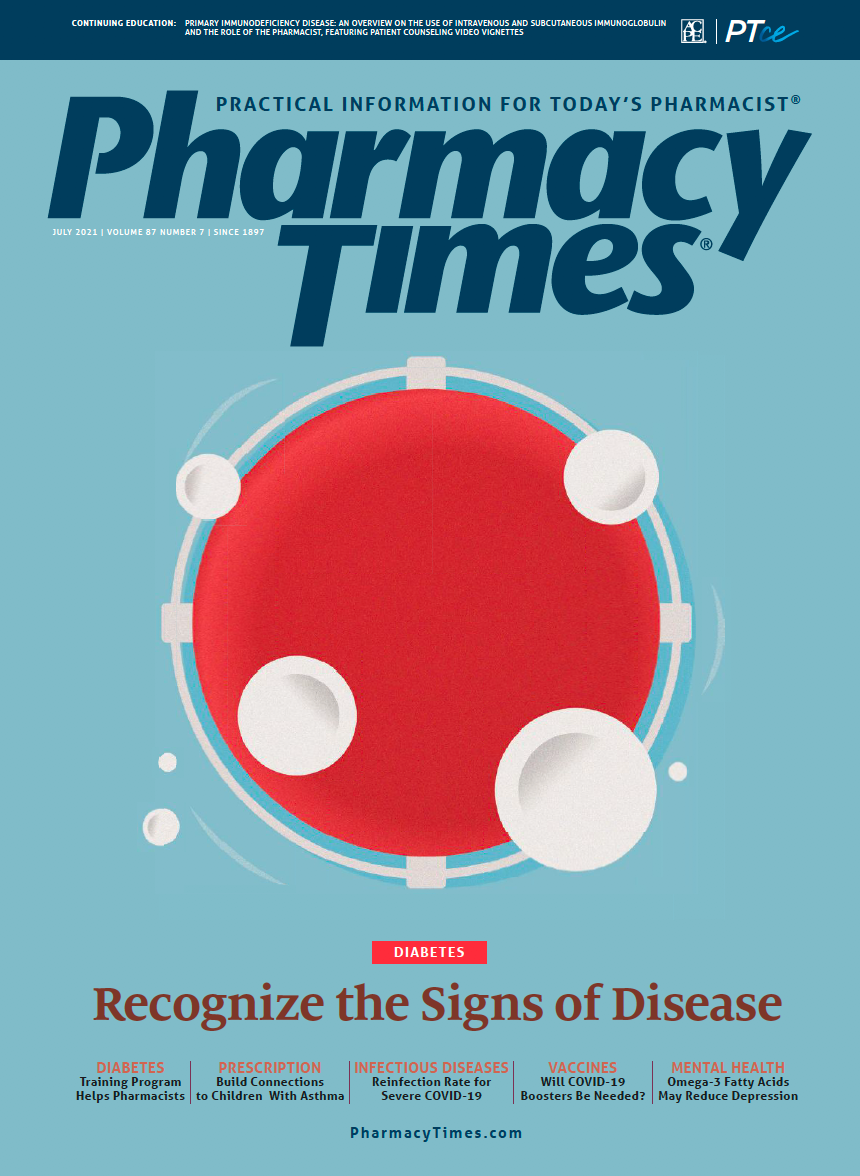Publication
Article
Pharmacy Times
Labeling and Packaging Issues Contribute to Dose, Quantity Errors
Author(s):
Companies and practitioners should take important steps to protect patients from these mistakes.
Two labeling and packaging errors are worth noting to protect patients.
Dosing error with sacubitril-valsartan. A dispensing error occurred when a pharmacist misinterpreted a prescription for sacubitril-valsartan (Entresto), a product used to treat heart failure that contains different amounts of sacubitril and valsartan (ie, 24/26 mg, 49/51 mg, and 97/103 mg). The prescription listed the strength as 100 mg, which the patient was supposed to take twice daily. However, none of the 3 available strengths of sacubitril-valsartan include a 100-mg strength. The pharmacist dispensed what he thought was closest to the strength prescribed, the 97/103-mg product, and instructed the patient to take the medication twice daily.
A few months later, the patient's physician increased the dose to 200 mg twice daily, and the pharmacist dispensed the 97/103-mg strength with instructions to take 2 tablets twice daily. However, that dose soon led the patient to experience severe adverse effects, including intense lethargy and hypotension. At that point, the pharmacist discovered that the patient had received twice the intended dose because of a dispensing error. The prescriber had added the dose amounts of the 2 ingredients together in the original prescription, so sacubitril-valsartan 49/51 mg (100 mg total) was the original intended dose (figure 1). Even though the product label lists the ingredients separately, the package insert suggests that dosing in clinical trials was based on the total amount of both components of the agent: sacubitril-valsartan 24/26 mg, 49/51 mg, and 97/103 mg were referred to as 50 mg, 100 mg, and 200 mg, respectively. Also, instructions for preparing a suspension from eight 49/51-mg tablets indicate the final concentration in terms of the combined strengths of the ingredients, 800 mg/200 mL.

Such confusion by the pharmacist is easy to understand. Most combination tablets in the United States are prescribed according to the strengths of each respective drug, not the total strength of all active ingredients. For example, the anti-Parkinson drug Sinemet (carbidopa-levodopa) lists the ingredients separately on the label and in the package insert, and the product is prescribed according to the strengths of each respective drug (ie, carbidopa-levodopa 10-100, 10 mg carbidopa and 100 mg levodopa; carbidopa- levodopa 25-100, 25 mg carbidopa and 100 mg levodopa; and carbidopa-levodopa 25-250, carbidopa 25 mg and levodopa 250 mg), not the combined total of both drugs. Ideally, the way strengths are expressed for multi-ingredient products and how these drugs are prescribed should be standardized to prevent confusion. For now, inform pharmacy staff members and prescribers about this potential for error. If there is uncertainty as to which strength was ordered, the pharmacist should contact the prescriber.
Alpelisib labeling confusion and wrong quantity error. Alpelisib (Piqray) is prescribed along with fulvestrant to treat specific forms of advanced or metastatic breast cancer. The standard dose is 2 alpelisib 150-mg tablets (300 mg) daily.
For this dose, the tablets are packaged in a carton or calendar pack with a principal display panel that notes, “Two 14-day blister packs each containing 28 tablets.” The label also states that this is a “28-day supply.”
However, the label fails to state the total number of tablets (56) contained inside the carton (FIGURE 2). This led to dispensing an extra carton of tablets during monthly refills for 2 patients. In these cases, the reporter explained that pharmacy staff members saw “28-day supply” on the carton and assumed they would need 2 boxes to reach the intended quantity of 56 tablets. The staff members did not recognize that “Two 14-day blister packs each containing 28 tablets” meant there were 56 tablets within the carton. In fact, some computer listings indicate “28” as the quantity.

It is important to note that alpelisib also is available in other monthly carton configurations and tablet strengths to accommodate dose reductions for certain adverse effects. These include a 250-mg total daily dose (one 200-mg tablet with one 50-mg tablet daily) carton and a 200-mg total daily dose (one 200-mg tablet daily) carton.
Organizations that prescribe or dispense alpelisib should ensure that the electronic health record and pharmacy software correctly indicate the tablet strength, daily dose, and correct quantity per carton. Educate staff members about potential confusion related to the correct quantity and dose. For the 300-mg and 250-mg total daily dose cartons, use flags or reminders to indicate that 1 box contains 56 tablets and that only 1 box is needed for a 28-day supply.

Newsletter
Stay informed on drug updates, treatment guidelines, and pharmacy practice trends—subscribe to Pharmacy Times for weekly clinical insights.





